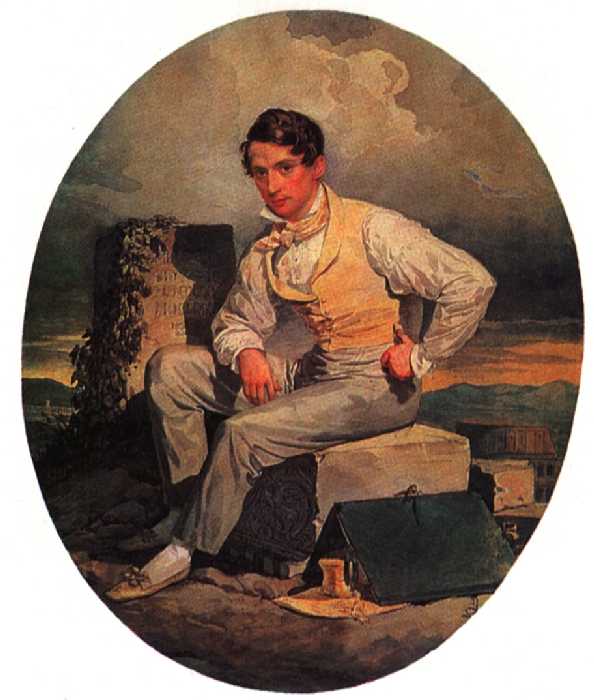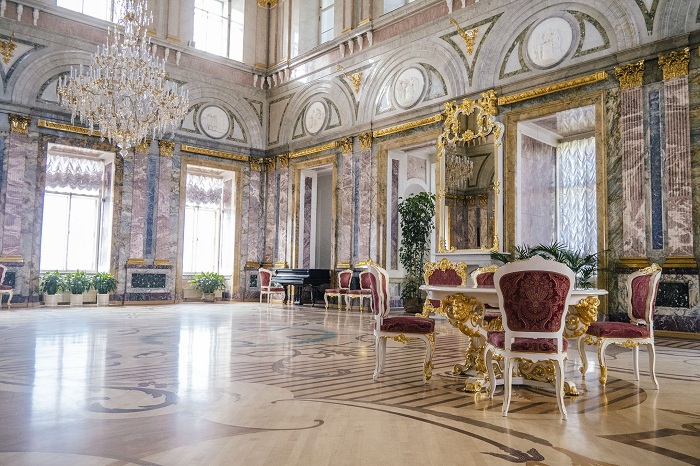The name of Alexander Bryullov is familiar to many connoisseurs of architecture and painting. According to his projects, the buildings of the Maly Opera and Ballet Theater, the Lutheran Church of Peter and Paul, the Headquarters of the Guards Corps, the Pulkovo Astronomical Observatory and several others were built in St. Petersburg. Also, Alexander Pavlovich is known as a graphic artist. He painted especially well in watercolor, was fond of lithography. We will talk about the life and work of the master in the article.
Biography
Alexander Pavlovich Bryullov was born on November 29, 1798 in St. Petersburg. His father, Pavel Ivanovich Brullo, a Frenchman by birth, was an academician of ornamental sculpture, a woodcarver, engraver and master of miniature painting. Mother, Maria Ivanovna Schroeder, had German roots and was the daughter of a court gardener. In addition to Alexander, the family had three more sons: Karl, Pavel and Ivan, and two daughters: Maria and Julia. All the children followed in the footsteps of their father and chose the artistic direction of activity.

In 1809, Alexander Bryullov and his younger brother Karl entered the Academy of Arts, where they studied at public expense. In 1821, the brothers got a public service, and a year later the Incentive Society sent them to hone their skills abroad. Before the trip, in accordance with the Highest Imperial Decree, Alexander and Karl, who previously had the surname Brullo, added the letter “b” at the end of the family name, thereby giving it a Russian form. The remaining family members were not affected by these changes.
In Europe
Winter 1822/1823 the brothers spent in German Munich, and then went to Italy, to Rome. There Alexander Bryullov with particular love studied the ancient ruins. In 1824, he visited Sicily with Alexander Lvov, later went to Pompeii, where he began to draft a term restoration. In the same year, in Paris, the artist published an album of drawings called "Pompeian Baths" with the text written by him.
In addition, in the French capital, Alexander Pavlovich attended a course in mechanics at the University of Sorbonne and attended lectures on the history of Buon architecture. Bryullov traveled from Paris to other cities in France, including Chartres. Then he visited England. In 1829 he returned to his homeland, to St. Petersburg. In 1831 he received the title of academician and became a teacher at the St. Petersburg Academy of Arts.
Famous architectural works
The Pompeian Baths brought Alexander Bryullov the title of member of the Royal Institute of Architecture in England and the Art Academy in Milan.
Most of the architectural projects of Alexander Pavlovich completed in St. Petersburg and its environs. One of the most famous works is the observatory on Pulkovo Hill and the Headquarters of the Guards Corps on Palace Square. Bryullov also built a Gothic church in Pargolovo for Countess Polle, Mikhailovsky Theater, a house in Slavyanka for Countess Samoilova.
In 1832, the architect designed the Lutheran Church of St. Peter and Paul in the style of English Gothic. In the same year he was awarded the title of professor of architecture, and then commissioned the construction of the Pulkovo Observatory.
Projects in the capital and province
Bryullov demonstrated the talent of the architect in 1837 when he recreated the Winter Palace's living quarters and built the Exzierzirgauz after a fire. In this project, Pompeii ornamentation was a great success - the corresponding palace gallery was named after her.
Then Alexander Pavlovich was instructed to rebuild the Marble Palace for the wedding of the son of Nicholas I, Prince Konstantin Nikolaevich. At the same time, Bryullov was engaged in the construction of the building of the Alexander Hospital. In the 1845-1850s. work continued on the Marble Palace, this time it was necessary to rebuild the “Service House”: on the ground floor to arrange the palace stables, and from the building overlooking the garden to make a playpen. To decorate the building along the facade, on the second floor above the windows, the architect provided for the relief “Horse in the service of man” seventy meters long - it was made by Peter Klodt according to the graphic sketch of Bryullov. Klodt also performed tympans of the side gables depicting newts that blow into shells.

Alexander Bryullov worked not only in the capital - he drafted projects for buildings under construction in the province. In the years 1835-1839. designed a memorial obelisk in Tobolsk in honor of the battle between the army of Kuchum, the Tatar khan, and the squad of Yermak. In 1842, in Orenburg, according to his design, a caravanserai was built, which included a mosque with a minaret and the building of civil institutions surrounding them.
Portraitist
Alexander Pavlovich was not only a talented architect, but also an excellent watercolor painter. In the 1820s in his work romantic landscapes prevailed. In 1824, after climbing Mount Vesuvius, he created a series of paintings dedicated to this event.
However, most of all the artist liked to paint watercolor portraits. Alexander Bryullov recalled that in 1825 for six months he could not leave Naples, because he had a huge number of orders. Rumors of a talented Russian portrait painter even reached the monarch of the Kingdom of Naples, and he wished that Alexander Pavlovich executed images of members of the royal family and reigning persons.
It is difficult to establish how many watercolor portraits Bryullov painted during his time abroad. Among the most famous works can be identified images of V. Perovsky, G. Gagarin, E. Poltoratskaya, I. Kapodistrias, E. Zagryazhskaya. In 1830, the artist created a self-portrait.
Technics
Paintings by Alexander Bryullov in a relatively early period of his work were done in a “dry manner”, similar to multi-layered body painting with small strokes - this is how he achieved color depth. Alexander Pavlovich, unlike his brother Karl, did not use such watercolor properties as transparency and lightness.
In the early 1830s. Bryullov painted portraits of the president of the Academy of Fine Arts A. Olenin and statesman M. Speransky. Then he created the image of H. Pushkina - the only portrait of the poet’s wife, painted during his lifetime. During this period, the watercolor technique of the master noticeably changed. Alexander Pavlovich has already departed from the corpus writing, strokes have become freer and easier. He wrote on yellowish paper in order to use its warm tone as the main one for the image of the hands and face of models.
In 1837, in Paris, visiting Princess Golitsyna, the artist Alexander Bryullov painted Walter Scott, and then independently translated the portrait on stone. In parallel with watercolor paintings, he also painted pencil ones, which were both independent (for example, the image of M. Vlasov, a portrait of an unknown ensign), and were intended for translation into lithography.
Personal life
In 1831, a significant event occurred in the biography of Alexander Bryullov: he married baroness Alexander von Rahl. In total, the couple lived together for 46 years, until the death of the artist. Bryullov's wife was a talented musician, and musical evenings were often arranged in their house, attended by M. Glinka, K. Bryullov, N. Gogol.
Nine children were born in the family, of which three sons and a daughter died young.
Alexander Bryullov died on January 9, 1877 at the age of 78 years. He was buried in the city cemetery of Pavlovsk. The grave of the artist is an architectural monument of federal significance.